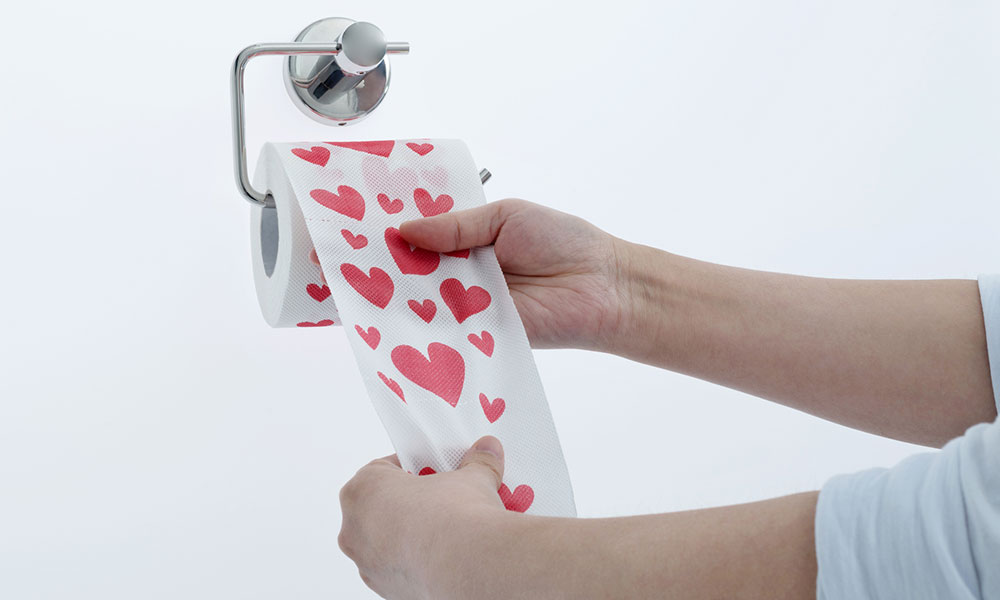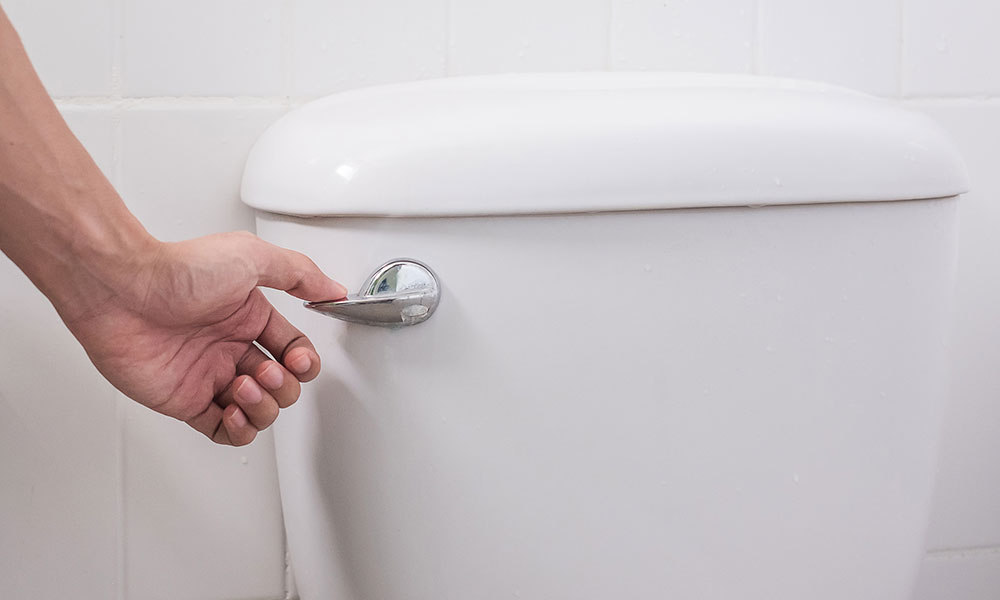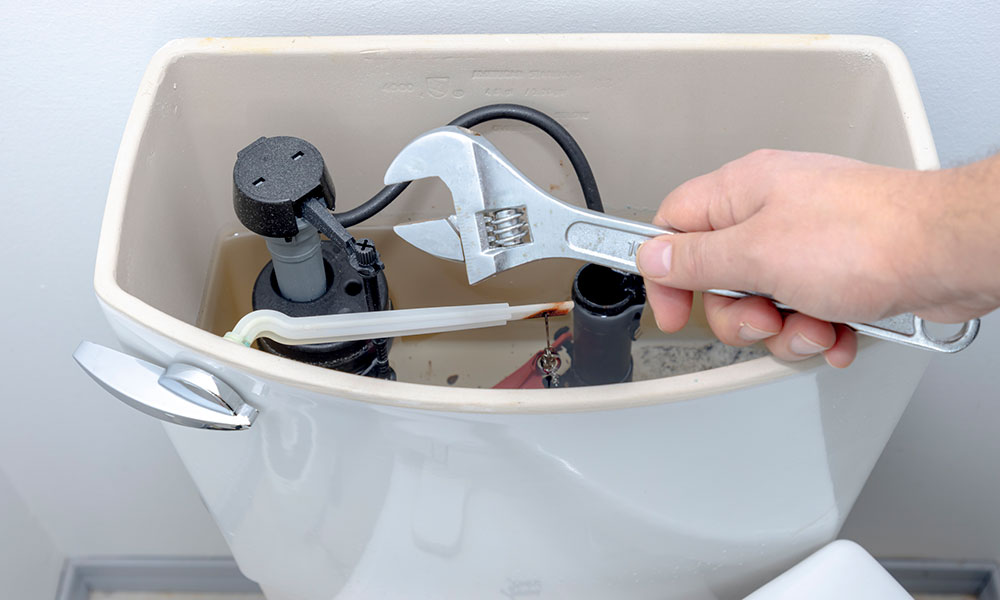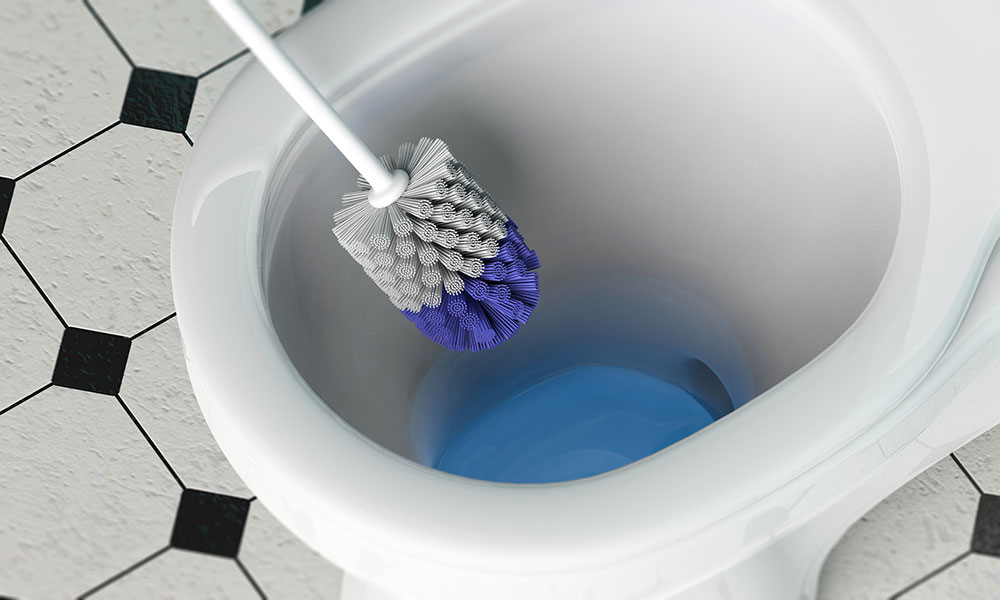NAIT expert offers insight into global impact and home maintenance
Toilets tend not to get the respect they’re due. In fact, the very term is used derisively.
If something is wasted or considered a failure, it “went down the toilet.” If a joke is particularly crude, it might be categorized as “toilet humour.” There’s more, of course, most of it unfit to print, making the nickname “throne” elegant by comparison.
Jim Jacques (Plumber ’01) sees things differently. “Plumbing is one of the greatest changes to humankind in terms of saving lives,” says the chair of Advanced Plumbing Technology. He puts the flushable toilet at the centre of that advancement.
“At one point it was recognized” – anywhere from 3,000 to 5,000 years ago, by either the Mesopotamians, Egyptians, Chinese, Romans or Scots, depending on which history you subscribe to – “that we have to start removing our waste outside of the buildings we were housed,” says Jacques.
When we did, later adding water to help whisk it all away, “all of a sudden, we were living longer, not getting as sick, all based on plumbing.”
Look at London, England, for example, where waterborne diseases such as cholera and typhoid were, well, nearly wiped out with the completion of the city’s sewer system in 1865.
For the United Nations’ World Toilet Day, recognized annually on Nov. 19, we talked to Jacques about the persisting global impact and potential of this area of plumbing, toilet TLC, and why this simple sanitary appliance should have us all flushing with pride.
Learn more about NAIT’s Advanced Plumbing Technology diploma
Not to be taken for granted

Jacques points out that, despite the recognized importance of toilets, 3.5 billion people worldwide go without them, according to the World Health Organization (WHO) and UNICEF. The organization hopes to see that number reach zero by 2030.
“In the developed areas where we have regular access, we take [toilets] for granted,” says Jacques.
This year, the organization is calling on people to take action by
- openly talking about the connection between our health and our toilets
- properly maintaining them
- not using them for disposing of pollutants
- lobbying governments to ensure adequate sanitation at home and abroad
“No matter how small of a change you can make, if we're all making that change, we can see a difference,” says Jacques.
That difference can even be quantified, he adds. In 2012, WHO calculated that US$5.50 in benefits were generated for every $1 invested.
The physics of flushing

The flush – the foundation of the modern toilet – is accomplished mainly by two features, Jacques explains. One is the tank of water above the bowl, the other is the “s-trap” pipe behind it. The rush of water into the bowl activates the siphon action that occurs inside that trap.
“When you encourage water movement [through the trap], it draws the rest with it,” says Jacques. “So we have a nice, flushed bowl.”
Tops in toilets
There is no shortage of models to choose from. But for Jacques, two aspects separate the great from the good:
- Water efficiency – Toilets of decades past required more than a dozen litres of water per flush. Today, says Jacques, they should work well using just under five, ensuring sanitation doesn’t come at an unnecessary cost.
- Diameter of the exit – A wider hole at the bottom of the toilet, where it connects to the flange in the floor – even by as little as a centimetre – will help limit clogging.
Keep the flowing going

Jacques encourages everyone to attempt basic toilet repairs when required.
“I just recommend not waiting ‘til the end of the day to do it,” he adds. From past days in the field, he recalls too many homeowners starting the job after watching instructional YouTube videos at the end of a workday.
“Things go sideways,” says Jacques. If setting things straight calls for a pro, “now you're paying more for a plumber because it's after hours.”
One of the most common points of failure on a toilet, he notes, is the flapper. Over time, this piece of rubber can deteriorate or warp, allowing for a constant trickle of water between the tank and the bowl. It’s an easy, inexpensive fix, says Jacques.
“Just don’t wait until Friday after work to get started.”
Speaking of sanitation

Like a fine teacup, most toilets are made of porcelain. It’s durable and non-porous, with a smooth surface that’s easy to clean.
Don’t clean it with just anything. To prevent staining and bacterial growth, you want the surfaces to stay shiny and unscathed.
“I use anything that says it's safe for porcelain,” says Jacques.
Which is to suggest that your toilet is indeed an element of your home that deserves care and respect. It should not be abused – whether that be with abrasive cleaners or scouring, says Jacques, or even the spurious claims of YouTubers who may not fully appreciate the impact of the toilet on the development of humankind.
“You know the stories of people using Coca Cola?” says Jacques. “I wouldn't go that way.”
A new path to plumbing
Introduced in 2021 alongside three other trades diploma programs at NAIT, Advanced Plumbing Technology offers a direct pathway into education in the field for those who are not registered apprentices, including international students. The program focuses on theory and hands-on training required to master installation, repair, perform maintenance and more.
Check application opening dates and deadlines
Banner image by wir0man/istockphoto.com